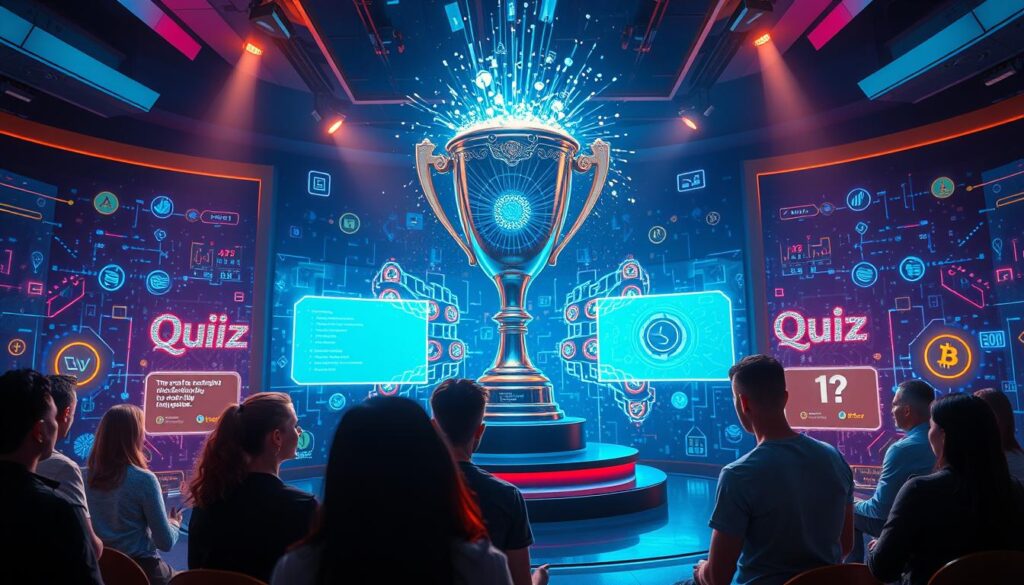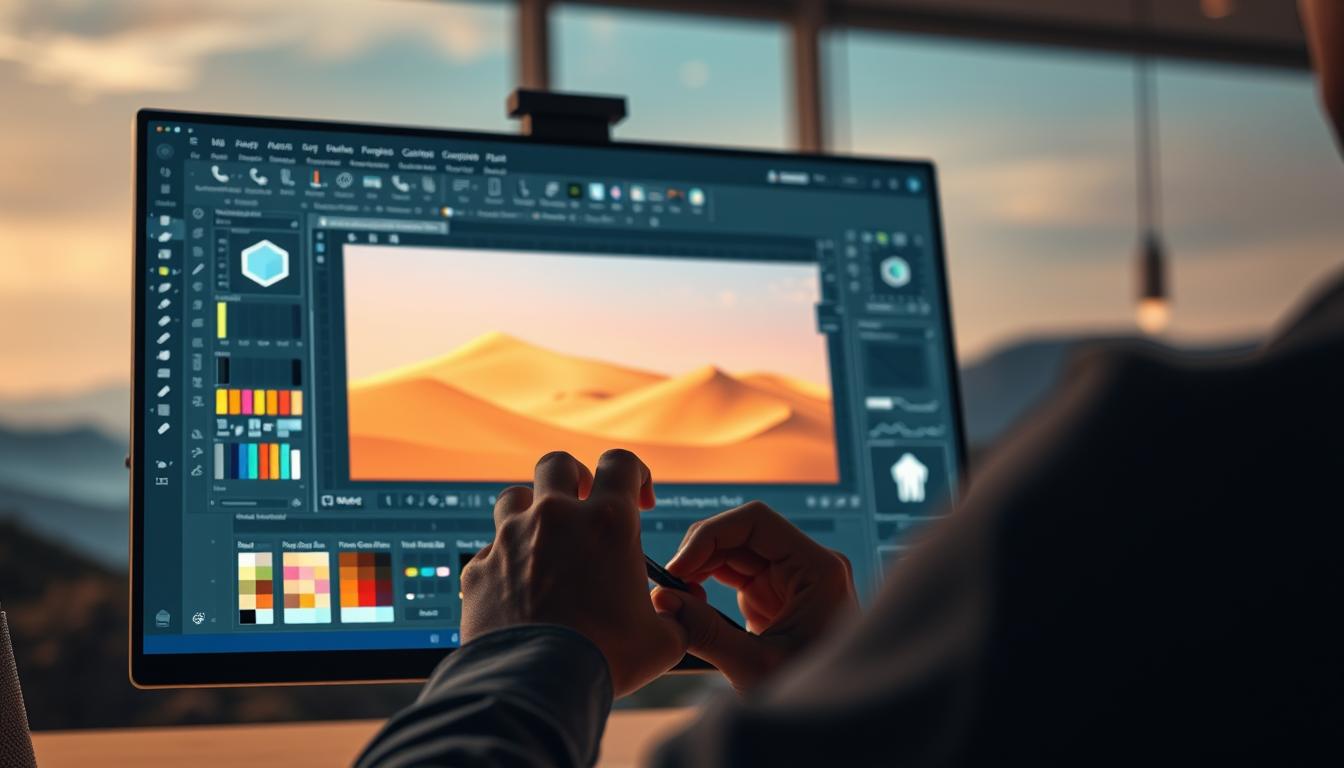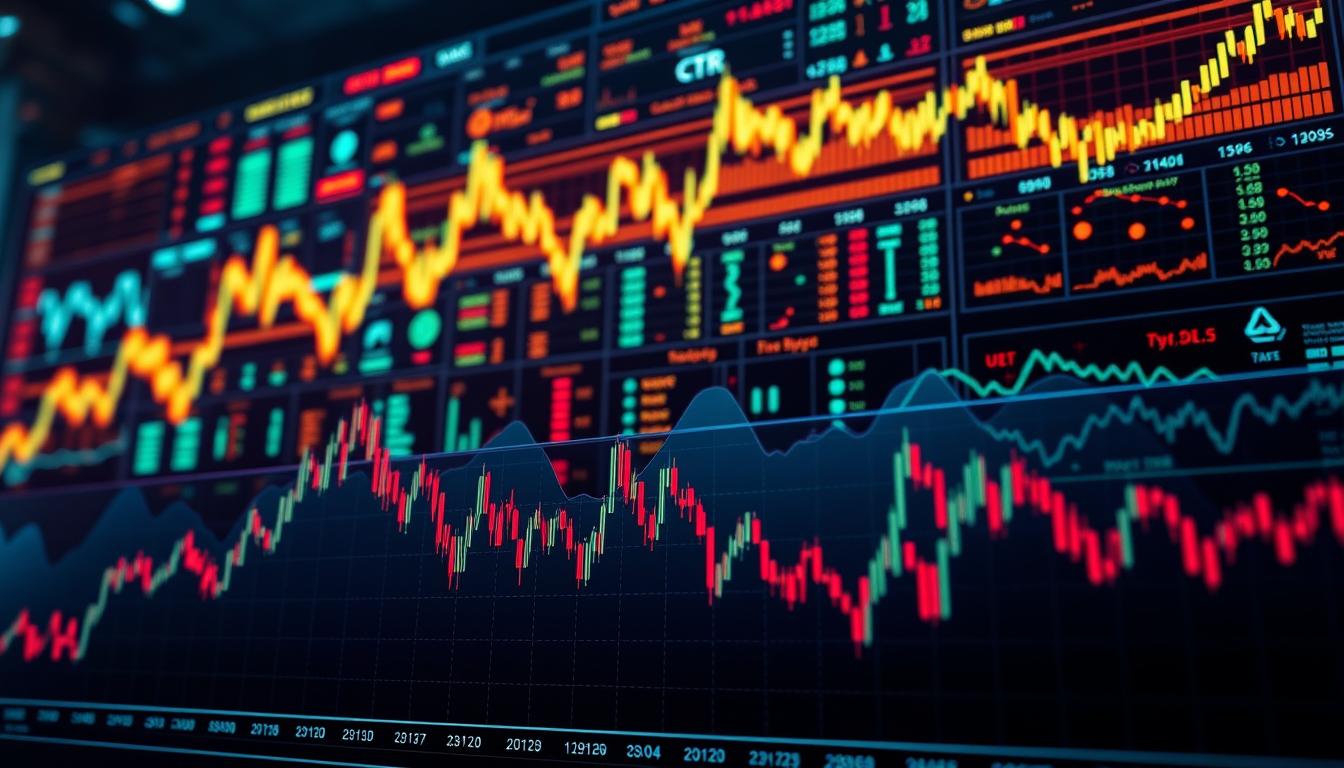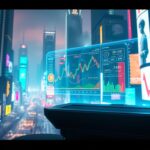Now Reading: Discover How to Create Pixel Art NFTs Without Coding
- 01
Discover How to Create Pixel Art NFTs Without Coding
Discover How to Create Pixel Art NFTs Without Coding
The digital art revolution is rewriting the rules of creativity. Blockchain technology and non-fungible tokens (NFTs) have turned simple designs into valuable assets, with the market hitting $10.7 billion in sales during 2021’s third quarter. This explosive growth opens doors for anyone willing to explore artistic expression—no gallery connections or art degrees required.
Pixel-based designs stand out in the NFT space for their retro charm and technical simplicity. These blocky, colorful creations tap into nostalgia while leveraging modern blockchain advantages. Artists can build entire collections using free tools, bypassing complex software traditionally associated with digital artwork.
This guide focuses on accessible creation methods that remove technical barriers. You’ll learn to transform basic ideas into market-ready NFTs using straightforward techniques. The process emphasizes visual storytelling over technical prowess, making it ideal for first-time creators.
Key Takeaways
- NFT markets generated over $10 billion in quarterly sales at their peak
- Pixel art’s simplicity makes it ideal for new digital creators
- Zero coding experience needed for NFT creation and listing
- Blockchain technology authenticates and protects digital artwork
- Free tools enable professional-quality results
- Digital art ownership is revolutionizing creative industries
Understanding Pixel Art and NFT Fundamentals
Nostalgic digital designs meet cutting-edge technology in today’s collectible space. This fusion powers a creative economy where retro aesthetics gain modern value through blockchain verification.
What Is Pixel Art?
This distinctive style uses individual colored squares as building blocks, much like assembling a digital mosaic. Born from 1980s tech limitations, it evolved into a beloved art form. Early video games and computer systems shaped its blocky charm, creating lasting emotional connections with audiences.
![]()
NFT Art and Blockchain Technology
Blockchains transform digital files into certified assets through non-fungible tokens (NFTs). Each token acts as a tamper-proof certificate, proving ownership and originality. Unlike standard image files, these tokens establish scarcity—a key factor in their market appeal.
The technology prevents duplication fraud while letting artists earn royalties automatically. For pixel creators, this means classic designs can become timeless collectibles with provable authenticity. Collectors value both the visual style and the secure ownership records embedded in blockchain ledgers.
Preparing Your Digital Artwork for Pixel Art NFTs
Foundational choices determine the success of your blockchain-ready designs. Strategic image selection and refinement set the stage for efficient conversion into retro-inspired digital collectibles.
![]()
Strategic Source Material Selection
Begin with a high-contrast base image featuring distinct shapes. A mythical creature silhouette or iconic landmark works better than busy landscapes. For instance, a simplified Merlion statue image becomes ideal material for stylized transformations.
Crop unnecessary elements using free editing tools. Focus on core features that define your subject. Complex textures and fine details often disappear during pixel conversion, making clean outlines essential.
Precision Resizing Techniques
Upload your edited file to platforms like resizeimage.net. Set dimensions to 32×32 pixels—the gold standard for classic pixel aesthetics. This scaling preserves recognizable features while initiating the blocky visual transformation.
Save the output as a PNG file to maintain transparency options. Proper formatting ensures compatibility with art generators and NFT platforms. Well-prepared source material reduces revision needs in later stages.
This preparation phase transforms ordinary images into optimized templates. Clear foundations enable creative experimentation while maintaining the charm that makes pixel-based collections desirable.
How to create pixel art NFTs without coding
Modern platforms empower creators to craft digital collectibles through intuitive interfaces. These solutions remove traditional barriers, letting artists focus on visual impact rather than technical complexities.
![]()
Harnessing Browser-Based Editors
Leading platforms like Pixilart simplify design workflows with layer-based editing. Users upload resized base images, then trace outlines using digital pencil tools. This approach maintains original proportions while applying retro aesthetics.
The layer system proves invaluable for refining details. Artists isolate elements like backgrounds or character features, enabling precise adjustments. This method mirrors professional workflows without requiring specialized training.
Automated Conversion Workflows
Many platforms feature one-click filters that convert standard images into blocky masterpieces. Upload a 32×32 PNG file, and algorithms generate stylized versions within seconds. Artists can then fine-tune results using color palettes and shading tools.
These streamlined processes enable rapid iteration. Creators experiment with multiple variations before selecting final versions for blockchain minting. The entire journey from concept to NFT-ready file often takes under an hour.
By combining manual precision with automated enhancements, artists achieve professional results. This blended approach preserves creative control while leveraging technology’s efficiency.
Step-by-Step Pixel Art Creation Process
Building retro-inspired digital collectibles requires precision and simplicity. This structured approach combines manual detailing with strategic automation, perfect for crafting cohesive series. Let’s explore the core stages that transform concepts into blockchain-ready assets.
![]()
Tracing and Sketching Your Artwork
Begin by importing your base image into editing software. Use pencil tools to trace outlines on a new layer, preserving original proportions. Focus on defining shapes like facial features or object contours first.
Separate elements onto individual layers during this phase. Hair, eyes, and accessories each get dedicated spaces. This method enables quick adjustments without disrupting the entire composition.
Resizing and Pixelating Your Image
Convert sketches into blocky designs using 32×32 pixel grids. Free platforms automate this scaling while maintaining clarity. The pixelation process sharpens edges, creating that classic 8-bit aesthetic collectors adore.
Save files as PNG to preserve transparency. Proper formatting ensures compatibility across NFT marketplaces and social platforms.
Applying Colors and Adding Layers
Select palettes that evoke nostalgia—think vibrant arcade-game hues. Apply base colors to separate layers, starting with backgrounds. Build depth using shading techniques on additional tiers.
Accessories like hats or glasses occupy their own layers. This flexibility lets artists mix elements across designs, expanding collection possibilities efficiently.
| Tool Type | Purpose | Key Features |
|---|---|---|
| Vector Editors | Precise outline creation | Layer isolation, grid snapping |
| Pixel Converters | Image optimization | Batch processing, preset filters |
| Color Palette Generators | Aesthetic consistency | Retro presets, export codes |
This workflow balances creative freedom with technical discipline. Artists maintain stylistic consistency while exploring variations through layered components. The result? Market-ready assets that honor pixel traditions while embracing blockchain innovation.
Essential Tools and Platforms for No-Code NFT Art
The ecosystem of digital creation tools continues to expand, offering artists diverse paths to blockchain success. Selecting the right combination of design software and distribution channels can elevate your work from concept to collectible.
User-Friendly Pixel Art Generators
PixelMe simplifies initial conversions with adjustable grid sizes and color reduction sliders. Beginners appreciate its drag-and-drop interface, though commercial projects may require upgrades. For open-source flexibility, Pixel It allows custom block dimensions and palette tweaks while preserving original file rights.
Large-scale creators leverage Pixelator’s batch processing for entire collections, though Windows users get exclusive access. PixilArt stands out with animation support and community tutorials, ideal for dynamic blockchain-ready designs.
Choosing the Right NFT Marketplace
Market platforms vary in audience reach and fee structures. OpenSea dominates with multi-chain support and 150+ payment options, while SuperRare’s curation process attracts high-end collectors. Consider Rarible for decentralized governance models or Nifty Gateway for credit card accessibility.
| Platform | Key Features | Best For |
|---|---|---|
| OpenSea | Multi-chain support, low entry barriers | First-time creators |
| SuperRare | Curated collections, artist royalties | Premium digital art |
| Nifty Gateway | Fiat payments, celebrity collabs | Mainstream audiences |
Each option presents unique advantages depending on collection size and target audience. Pairing robust design tools with strategic marketplace selection forms the foundation for successful blockchain art ventures.
Exploring Digital Ownership and Blockchain Benefits
Digital collectibles are reshaping ownership models through blockchain innovation. This technology provides indisputable proof of authenticity while enabling artists to retain control over their work. The system’s transparency and automation redefine value exchange in creative industries.
Smart Contracts and Royalties
Blockchain networks automate profit-sharing through self-executing agreements. Artists receive 2.5% to 10% royalties on secondary sales automatically. These coded contracts eliminate third-party oversight, ensuring creators get paid fairly every time their work changes hands.
Traditional art markets rarely allowed tracking resale profits. Now, programmable tokens embed payment rules directly into assets. Collectors see complete ownership histories, while creators gain recurring revenue streams from popular pieces.
| Feature | Traditional Art | Blockchain Assets |
|---|---|---|
| Ownership Proof | Paper certificates | Immutable blockchain records |
| Resale Royalties | Rarely enforced | Automated payments |
| Global Access | Limited by location | Borderless transactions |
This framework supports collaborative projects through shared ownership models. Multiple artists can split earnings proportionally using smart contract parameters. Fractionalized tokens even let collectors own percentages of high-value digital assets.
Blockchain’s transparency combats art fraud by documenting every transaction publicly. Each token’s journey from creator to current owner remains traceable. This system builds trust while maintaining scarcity in digital spaces.
Managing NFT Market Trends and Artist Opportunities
Timing and strategy separate successful artists from casual creators in the blockchain space. Understanding collector behavior and platform dynamics helps creators maximize visibility and revenue potential.
Market Data and Sales Trends
The NFT market peaked at $10.7 billion in Q3 2021, proving digital collectibles aren’t just a passing trend. Retro-styled pieces thrive by connecting with audiences who value gaming history and early internet culture. Artists targeting these groups often see faster sales and higher secondary market activity.
Launch timing significantly impacts success rates. Many creators schedule drops around cultural events or platform feature updates. Monitoring sales patterns helps identify ideal windows when collector engagement peaks.
Effective Digital Promotion Strategies
Social media platforms drive discovery, with Twitter Spaces and Instagram Reels being prime channels. Behind-the-scenes content showing design iterations builds anticipation. Artists often share workspace videos or color palette experiments to humanize their process.
Active participation in Discord communities establishes credibility. Regular interactions in niche groups lead to organic word-of-mouth promotion. Pairing artwork with compelling origin stories during the NFT minting process adds emotional depth that resonates with buyers.
Consistency matters more than viral moments. Posting weekly updates and engaging with comments cultivates loyal followings. Many successful creators combine scheduled content with real-time interactions to maintain momentum between collection launches.
Addressing Challenges and Best Practices in NFT Creation
Navigating the blockchain art space presents unique obstacles alongside its creative potential. Technical barriers often surprise newcomers, but proven strategies turn roadblocks into stepping stones for growth.
Overcoming Technical Hurdles
Gas fees fluctuate wildly across networks—timing transactions during low-activity periods cuts costs. Wallet security remains critical; hardware storage solutions protect digital collectibles from unauthorized access.
File format compatibility issues plague many creators. Standardize outputs as PNG files with transparent backgrounds before minting. Metadata errors derail listings—double-check descriptions and attributes using platform validators.
Test new collections on blockchain testnets first. This sandbox environment reveals glitches without spending real cryptocurrency. Maintain version backups locally and in encrypted cloud storage to prevent data loss during iterations.
Engage developer communities when facing persistent issues. Most platforms host active Discord channels where experts troubleshoot technical challenges. These collaborative spaces accelerate problem-solving while fostering professional connections.














